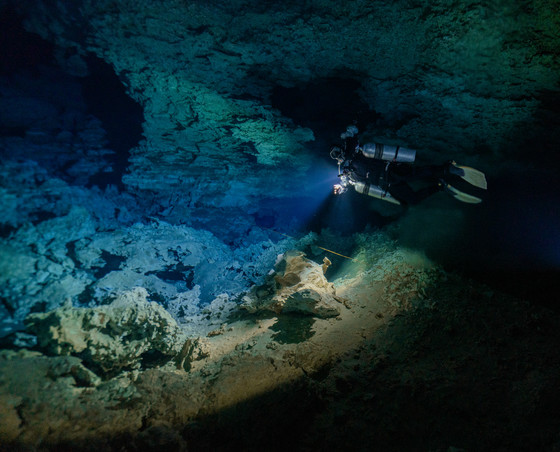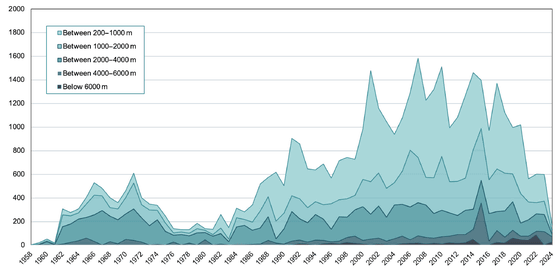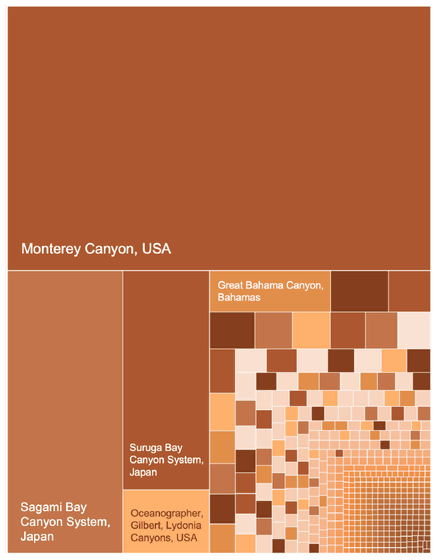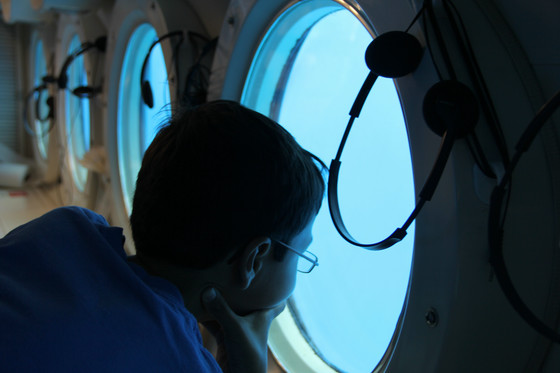Humans have only been able to visually explore 0.001% of the deep seafloor

A study published in May 2025 revealed that humans have only visually observed a mere 0.001% of the Earth's deep seafloor. The study was conducted by a joint research team from the deep-sea exploration organization
How little we've seen: A visual coverage estimate of the deep seafloor | Science Advances
https://www.science.org/doi/10.1126/sciadv.adp8602
We've Only Glimpsed 0.001% of Earth's Deep Seafloor, Study Reveals : ScienceAlert
https://www.sciencealert.com/weve-only-glimpsed-0-001-of-earths-deep-seafloor-study-reveals
The researchers analyzed more than 43,000 deep-sea dive records of depths of 200 meters or more. From the results, they estimated that the area of the deep sea floor that humans have visually observed in the past 67 years is at most 3,823 square kilometers. This is about 0.001% of the total area of the deep sea floor, which is 335.7 million square kilometers, and is slightly larger than the area of Saitama Prefecture in Japan. However, when calculated using a different method, the area of the deep sea floor that humans have visually observed is about 2,130 square kilometers, which is even smaller.

The deep sea floor covers 66% of the Earth's surface area, but much of it remains unknown. Research has shown that the number of deep-sea dives has increased fourfold from the 1960s to the 2010s, but observation bias has also become apparent. In the 1960s, about 60% of dives were conducted at depths of more than 2,000 meters, but this decreased to 25% in the 2010s. However, since about 75% of the ocean is thought to be 2,000 to 6,000 meters deep, the observation range of deep-sea diving has not expanded much.

There was also a striking geographical bias: of the more than 35,000 dives in the exclusive economic zone, more than 70% were conducted by just three countries: the United States, Japan, New Zealand, France, and Germany. Furthermore, 97% of all dives since 1958 were conducted by just five countries: the United States, Japan, New Zealand, France, and Germany.
Observations of seafloor topography are also highly biased, with certain seafloor topographical features, particularly submarine valleys, cliffs and slopes, over-represented, while features such as continental shelves, knolls and abyssal plains are relatively under-represented.
For example, of the 9,472 confirmed underwater canyons in the world, only 442 have been visually observed at least once. The most observed canyon is the Monterey Canyon off the west coast of the United States, which alone accounts for 48.2% of the world's underwater canyon observations. In second place is Sagami Bay in Japan.

'With accelerating threats to the deep ocean, from climate change to potential mining and resource development, the limited exploration of such a vast area poses significant challenges for both science and policy,' said Katherine Bell, founder and president of the Ocean Discovery League.
The team estimates that even if more than 1,000 probes were deployed around the world to increase exploration of the deep seafloor, it would take about 100,000 years to visualize the entire ocean floor.

Related Posts:
in Science, Posted by log1i_yk







